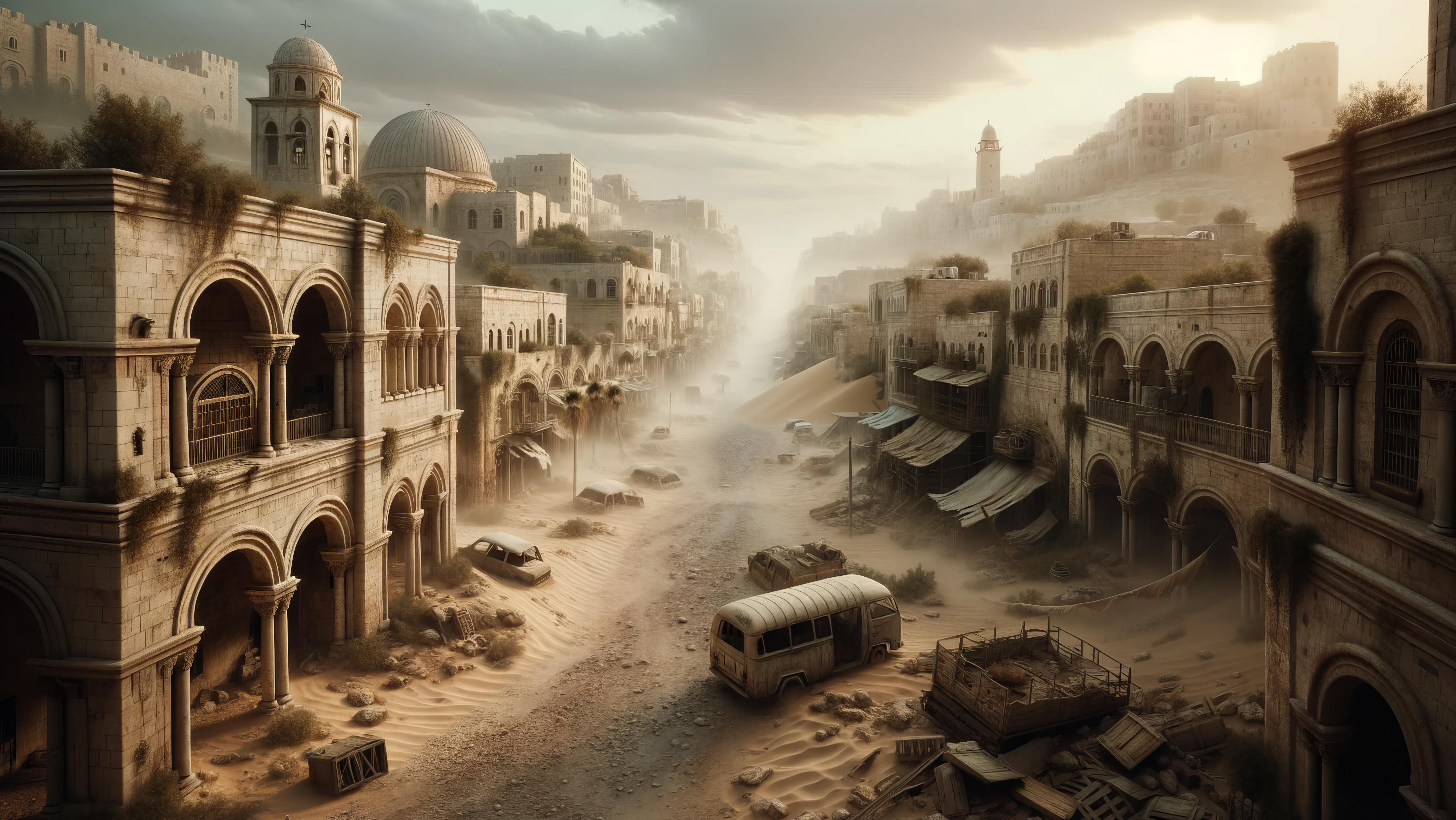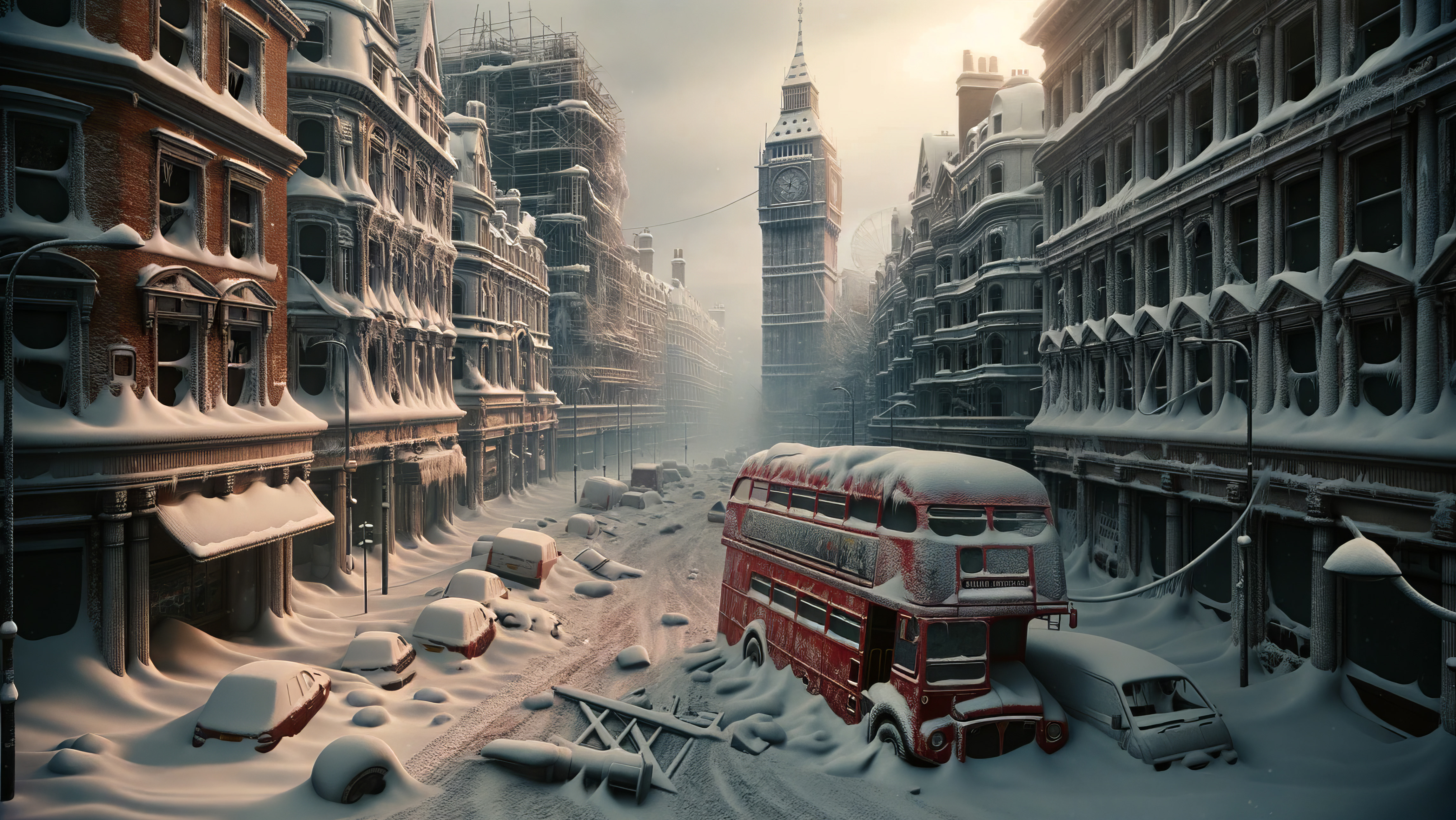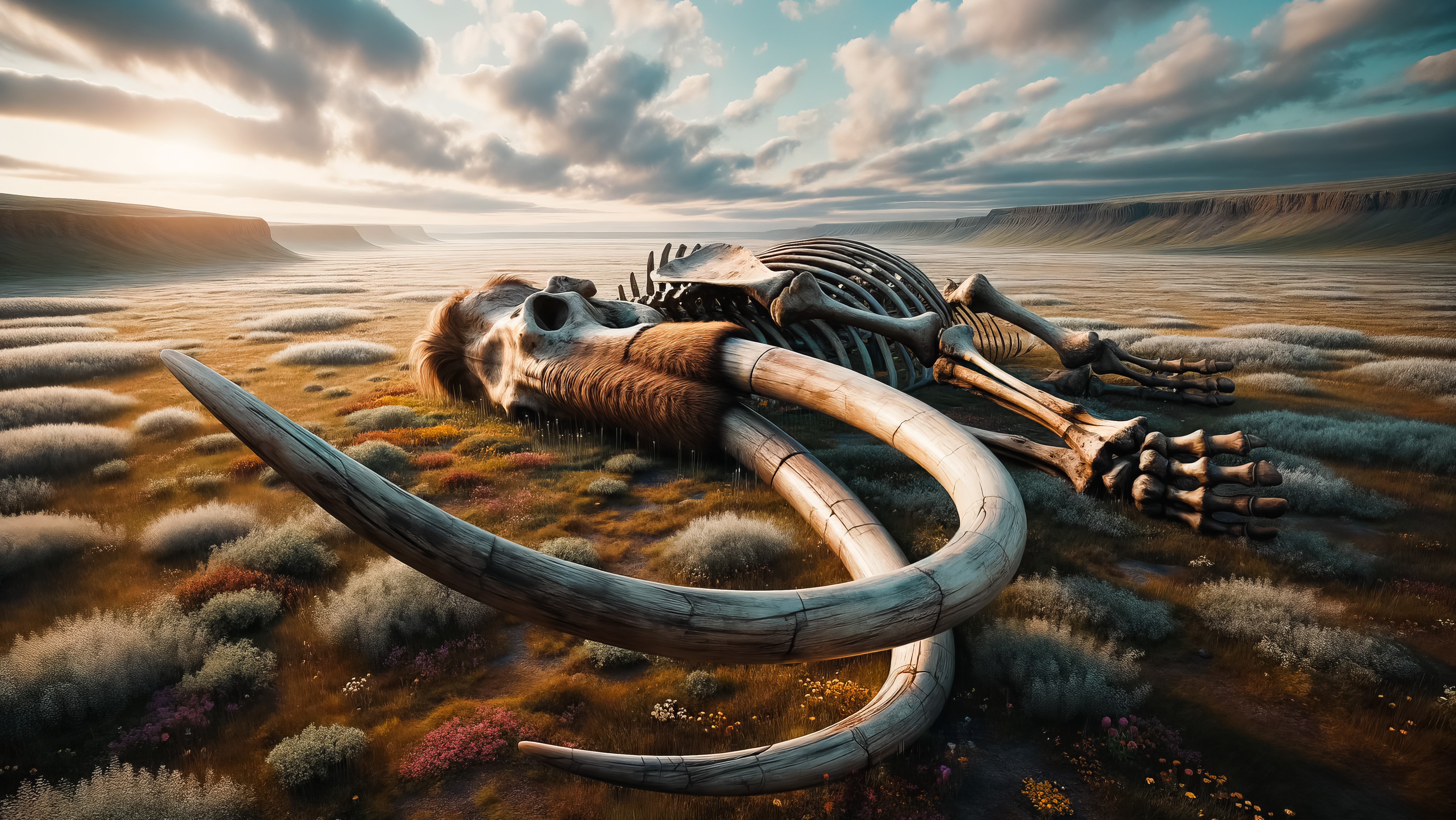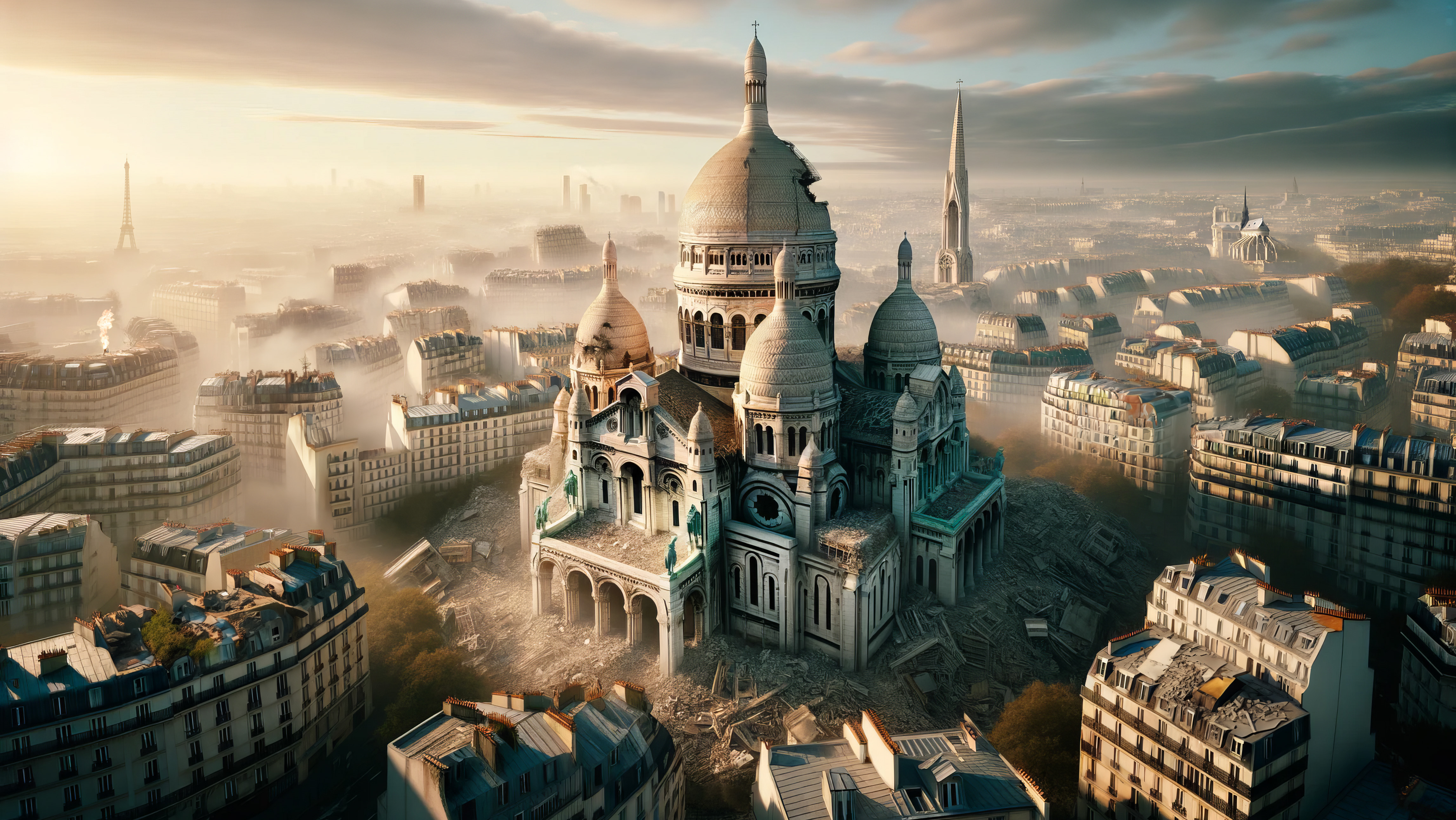Chronicles of Time's Resonance
The vibrations of the trans-dimensional portal gradually faded, replaced by an overwhelming stillness. I found myself in the heart of a city, and its silence was punctuated only by the distant whispers of the wind. Before me, the vast expanse of Jerusalem in June 2080 unravelled, its aura both familiar and alien.
I studied Earth's history, its civilisations and its monumental achievements. Jerusalem, often called the 'City of Gold', was a testament to human perseverance, faith, and architectural prowess. The chronicles had spoken of its bustling bazaars, towering monuments, and the cacophony of life. Yet, the reality before me was starkly different.
The streets of the Old City, historically a melting pot of cultures and epochs, now lay dormant. Each cobblestone and facade seemed frozen in a moment, holding onto memories of past ages. The alleys, which once echoed with the footsteps of pilgrims, traders, and scholars, now whispered tales of their journeys—stories of conquests, peace treaties, spiritual awakenings, and ordinary lives.
A chilling wind swept through, carrying with it the scent of desolation. The buildings, some still tall and others in ruins, spoke of a civilisation that had once thrived here. These structures, with their intricate carvings and timeless designs, were silent witnesses to the city's rich tapestry of history.
In the distance, I noticed the silhouette of a mosque, its domes and minarets bathed in the soft twilight. The serenity it exuded was in stark contrast to the surrounding desolation. Nearby, the Jaffa Gate, an architectural marvel even in its state of decay, seemed to beckon travellers from across time and space. Its arches, still intact despite the ravages of time, stood as portals to tales from a bygone era.
Every corner of this city held a story, a memory, a moment frozen in time. And as I began my exploration, I realised that while the town might have been silenced by the sands of time, its spirit, its essence, was very much alive, waiting to be discovered.
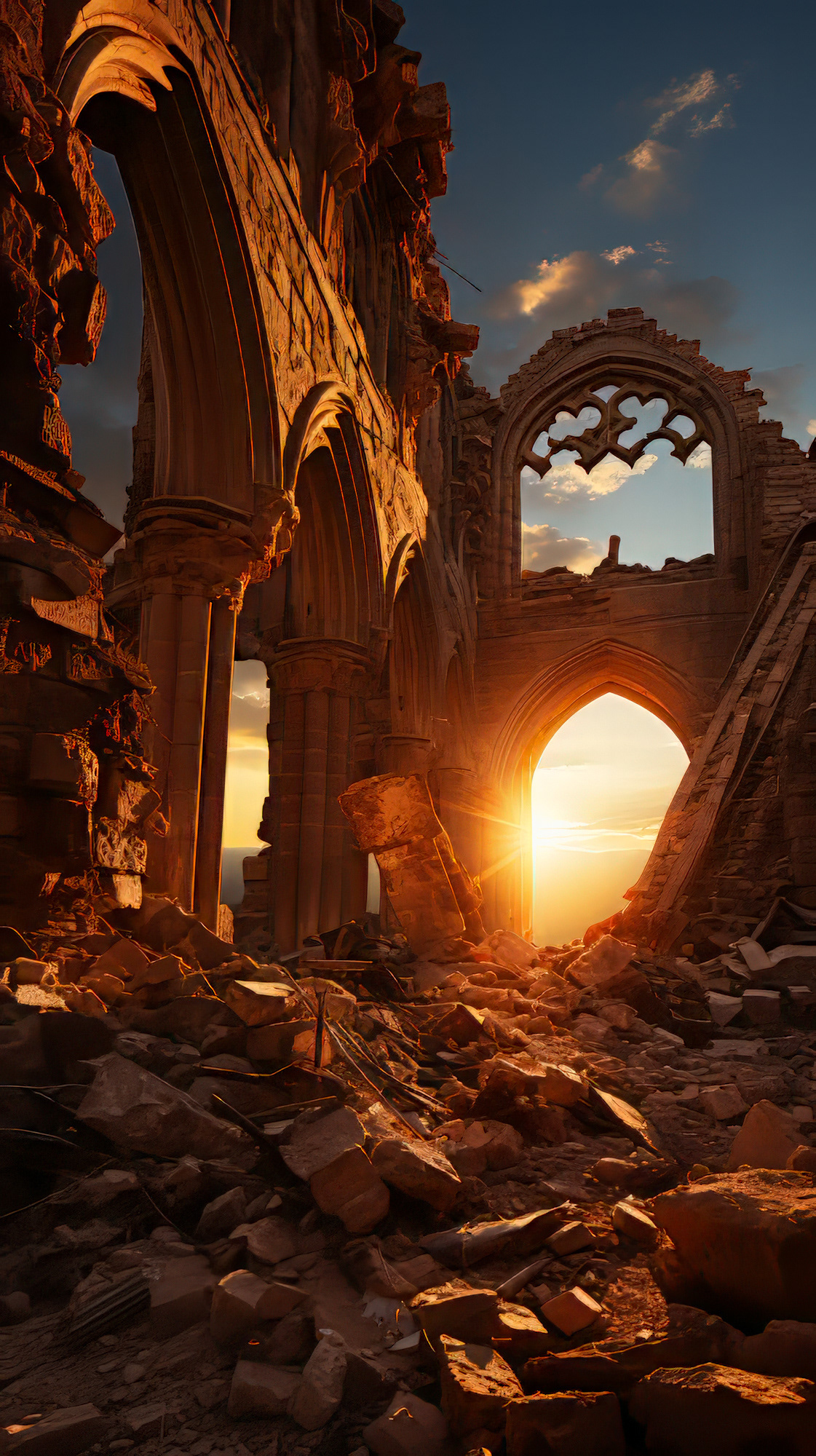
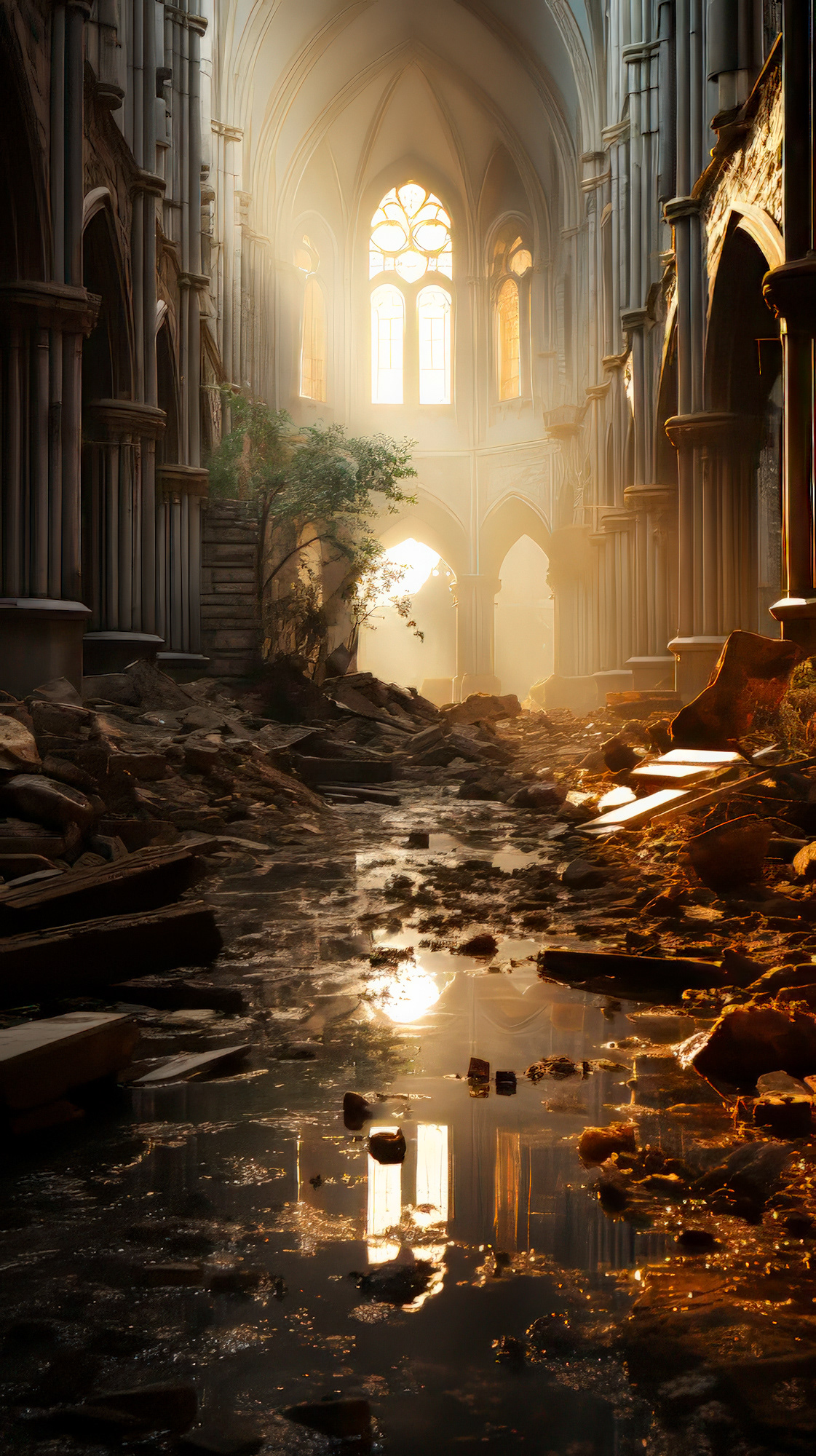
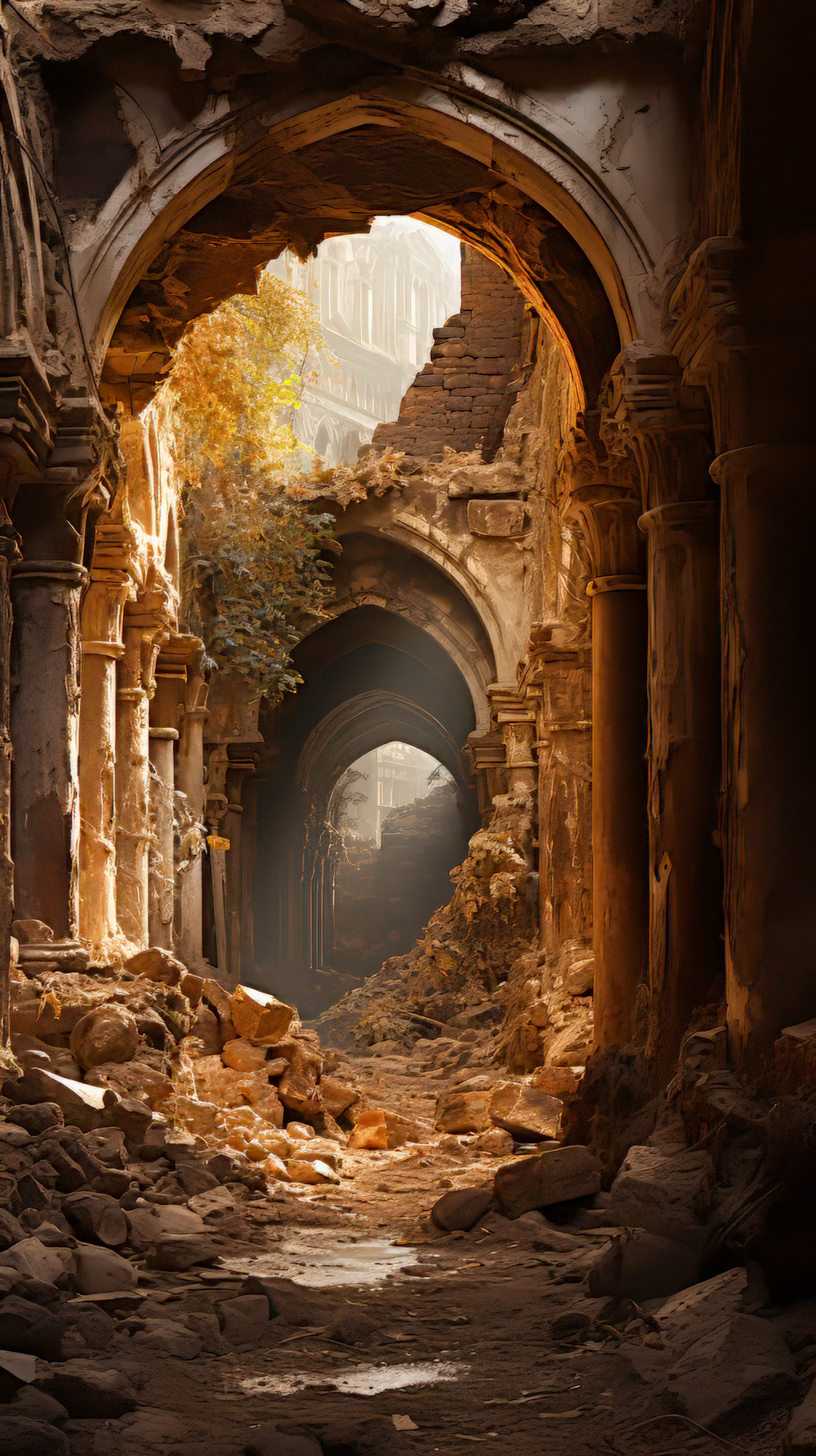
Desert Whispers and the Lament of Gold
The desert, an ever-shifting entity, held dominion over vast stretches of Jerusalem. Like silent sentinels, its golden grains had observed the passage of time, watching civilisations rise, flourish, and eventually fade. As I ventured further into the city, the desert's influence was unmistakable.
Each gust of wind carried with it tales of old, of caravans traversing treacherous terrains, of nomadic tribes seeking oases, and of ancient rituals performed under the canopy of stars. The winds seemed to mourn the loss of a city that once defied the desert's might, a town that gleamed with gold and echoed with life.
The cobblestone streets, which had once resonated with the footsteps of countless souls, were now being reclaimed by the desert. In their relentless march, the sands had enveloped pathways, plazas, and even entire buildings. This dance of nature, creation and decay was a testament to the cyclical nature of existence.
As I wandered, the city's iconic golden structures drew me in. The Dome of the Rock, symbolising Jerusalem's spiritual heart, stood resplendent even in its solitude. Though dulled by the elements, its golden sheen radiated a timeless aura. Generations sought solace, wisdom, and connection at this crossroads of faiths. Though the voices of prayer had ceased, the dome's essence was indomitable.
Nearby, remnants of other golden structures peeked through the sands. These edifices, once centres of learning, trade, and governance, held within them the aspirations and dreams of a people. Their walls, adorned with intricate designs, silently narrated tales of grandeur, of festivals celebrated, and of bonds forged.
The desert, while encroaching, also preserved the city's legacy. Beneath its protective layer, artefacts, inscriptions, and relics lay waiting to be discovered. Each find was a window into the past, offering glimpses into the daily lives, the challenges faced, and the triumphs celebrated by the city's inhabitants.
As the sun dipped below the horizon, casting the city in a golden hue, I felt an overwhelming reverence. With its rich tapestry of history, faith, and culture, Jerusalem was a beacon for explorers like me. Its golden legacy, though silenced by the sands of time, would forever shine, a testament to the indomitable spirit of humanity.
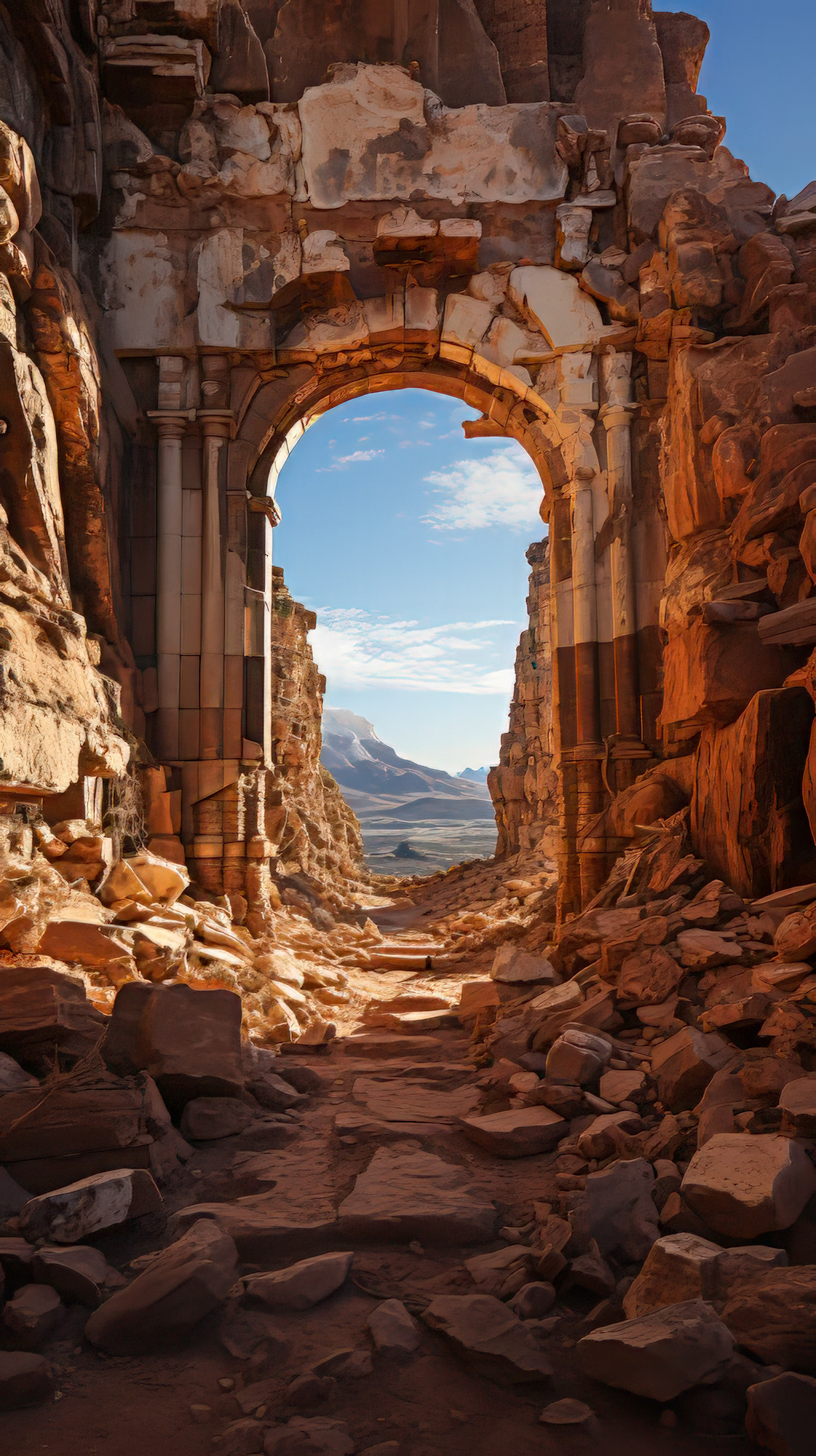
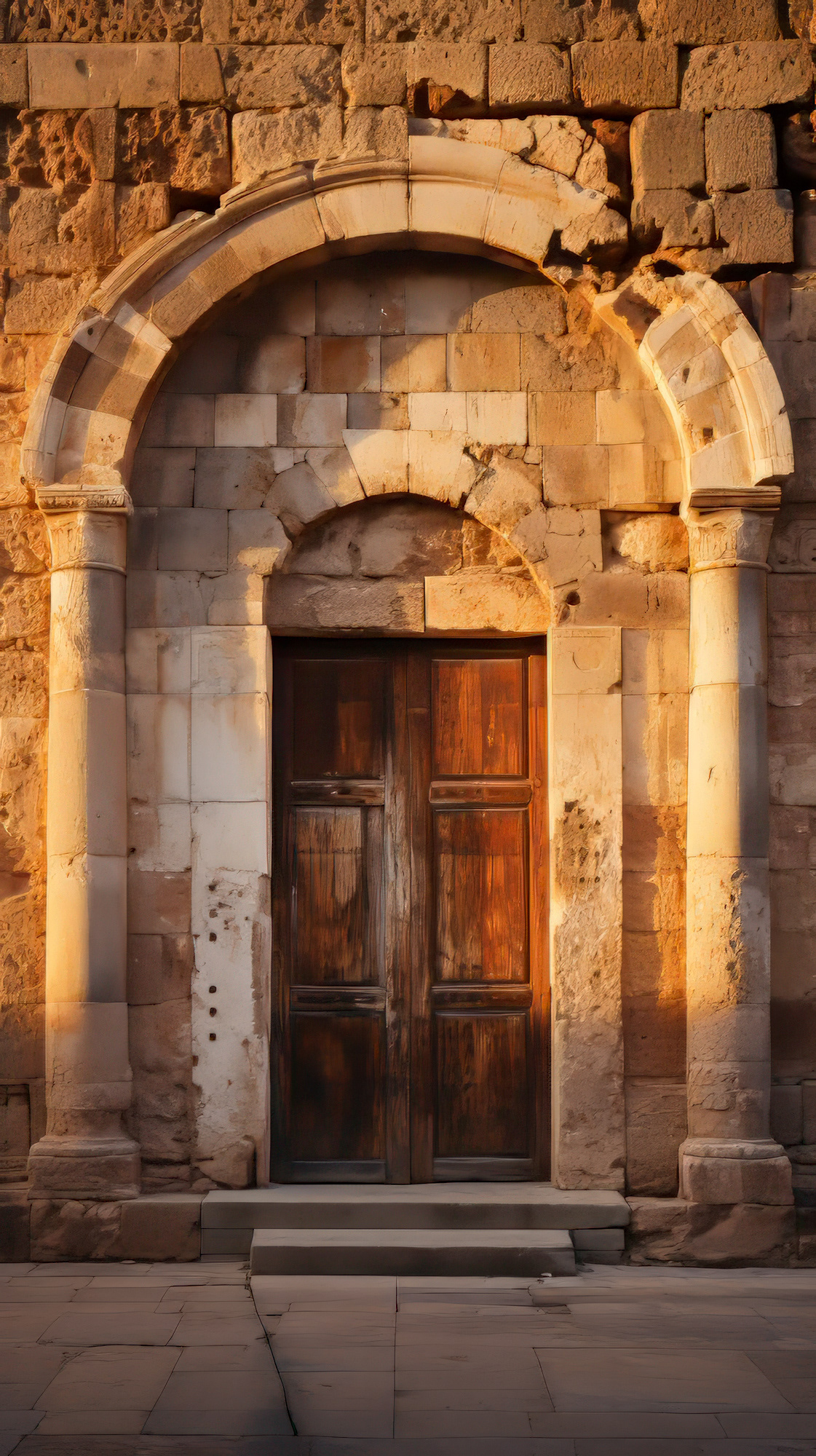

Sacred Echoes in the Sands of Time
The heart of Jerusalem pulsated with energy that defied the silence around. As I delved deeper, I was drawn to a structure that had stood resilient against the ravages of time: the Western Wall. This remnant of a once-grand temple was more than just stones and mortar; it was a sanctuary of human faith and spirit.
With its massive blocks of limestone, the Wall bore the weight of centuries. It had been a silent witness to the evolution of civilisations, the rise and fall of empires, and the undying spirit of a people. Every crevice, every stone seemed to hold within it a prayer, a hope, a dream. The remnants of notes, wedged between the stones by countless souls, whispered tales of love, longing, gratitude, and despair.
As I approached, I could almost feel the collective energy of generations congregating here. Pilgrims, scholars, rulers, and commoners sought solace and connection at this sacred site. Though lost in the annals of time, their voices seemed to resonate in the air. The Wall was not just a relic; it was a bridge connecting the past with the present, the earthly with the divine.
Near the Wall, remnants of ancient rituals were evident. Stone altars, ceremonial vessels, and inscriptions hinted at ceremonies once held, offerings made, and the people's deep spiritual connection with the cosmos. The Wall and its surroundings were a testament to humanity's quest for meaning, purpose, and transcendence.
As I lingered, the desert winds brought with them melodies of ancient hymns, chants, and psalms. These songs, echoing through time, spoke of a people's unwavering faith, of their challenges and triumphs, and of their eternal bond with the divine. In its stoic silence, the Wall seemed to reverberate with these melodies, creating a symphony that transcended time and space.
The sun cast long shadows as it descended, painting the Wall in hues of gold and amber. The play of light and shadow, tangible and ethereal, was a mesmerising sight. And as dusk approached, the Western Wall, with its rich legacy, stood as a beacon of hope, a reminder of the indomitable spirit of faith that endures, even in the face of time's inexorable march.
The Journey from Sacred Pilgrimage to Poignant Silence
Jerusalem, historically known as a spiritual epicentre, was a city where pilgrims from far and wide converged. Their paths, driven by faith and devotion, led them to this sacred land, seeking blessings, enlightenment, and connection. The city's alleys and squares resonated with their chants, prayers, and songs of devotion.
However, the Jerusalem I stepped into was markedly different. Once teeming with life and energy, the pathways now echoed with a poignant silence. The air, though still, seemed charged with the memories of the countless souls who had once walked these very streets.
The city's significance as a pilgrimage site was unparalleled. Here, prophets preached, miracles were believed to have occurred, and ancient rituals were performed. Every stone, every corner held a tale, a legend, a piece of the grand mosaic that was Jerusalem's spiritual legacy.
Yet, the silence was overwhelming. The bazaars, where merchants once displayed their wares and pilgrims bartered for keepsakes, were now eerily quiet. The fountains, around which tales were shared and friendships forged, stood still, their waters long gone.
Despite the desolation, the city's spiritual aura was undeniable. The remnants of grand cathedrals, synagogues, and mosques spoke of a time when faith was the very heartbeat of Jerusalem. The walls, adorned with symbols of various beliefs, silently narrated tales of devotion, sacrifice, and divine encounters.
Walking through the city, I could sense the weight of history. The footsteps of the devout, the preachers' voices and the contemplative's silent prayers seemed to linger, creating a tapestry of faith that transcended time. Jerusalem, in its silence, was still a beacon, a testament to humanity's eternal quest for the divine.
Echoes of Bustling Markets and Jerusalem's Fading Liveliness
The heart of any city lies in its markets and bazaars, and Jerusalem was no exception. Historically, its marketplaces were a cacophony of sights, sounds, and scents. Traders from far-off lands showcased their exotic wares, locals bartered with unmatched zeal, and stories of adventures were exchanged over cups of spiced tea.
However, as I wandered through the city's commercial centres, I saw a stark contrast. The stalls, once vibrant with colours and activity, now stood deserted and forlorn. The intricately woven carpets, handcrafted jewellery, and aromatic spices that once adorned these stalls were replaced by a haunting emptiness.
The streets, which echoed with the spirited haggling of merchants and children’s laughter, were now shrouded in silence. The market's architecture, a blend of various epochs and styles, hinted at the city's glorious past. Carved wooden archways, mosaic-laden courtyards, and ornate fountains bore witness to a time when Jerusalem's markets were the epicentre of commerce and culture.
The aroma of freshly baked bread, grilled meats, and sweet pastries, which once wafted through the air, was replaced by the scent of aged wood and dust. Yet, amidst the silence, the spirit of the bazaar lingered. The cobblestone pathways seemed to retain the imprints of countless feet, and the walls whispered tales of traders, artisans, and travellers.
As I explored further, remnants of old establishments caught my attention. Abandoned cafes with rustic charm, bookstores that held tales from across the ages, and artisan workshops showcased the city's rich craft heritage. Each corner and alleyway held a story, a memory of the city's once-thriving vibrancy.
The juxtaposition of the bustling past against the silent present was poignant and profound. It was a reminder of the cyclical nature of civilisations, their rise, zenith, and eventual decline.
The howling wind signalled the onset of a sandstorm. The sky turned a deep shade of orange, and the air became thick with dust. I took shelter in the Church of the Holy Sepulchre. Inside, the church was a shadow of its former self. The once resplendent interiors were covered in a thick layer of sand, the artworks faded, and the altars buried. But even in its desolation, the church exuded a sense of reverence. Centuries of faith, hope, and devotion seemed to permeate its walls, offering solace amidst the storm.
Ethereal Glimpses of Jerusalem under the Moon's Embrace
With its storied past and architectural marvels, the city of Jerusalem took on a transcendent beauty under the gentle glow of the moon. As night enveloped the city, the silver luminescence unveiled a different facet of Jerusalem, painting it with an ethereal charm.
Ancient structures, which bore the marks of time and history during daylight, now stood as silhouetted guardians against the moonlit sky. Their long and dramatic shadows danced gracefully upon the cobblestone streets, creating a mesmerising play of light and dark. The quietude of the night, punctuated only by the soft hooting of an owl or the distant rustling of leaves, added to the city's mystique. Every archway and every courtyard seemed to hold within it a tale waiting to be discovered by those who ventured into the city's depths at night.
I found myself drawn to the city's reflective pools and ancient waterways. Shimmering upon their still waters, the moon's reflection created an almost magical aura. It was as if the waters held within them memories of the past, of lovers who walked beside them, of children who played by their banks, and of elders who sought solace in their tranquillity.
As I wandered, the city walls came alive with tales from yesteryears. Whispered legends of kings and queens, of battles fought and peace treaties signed, of artists, poets, and dreamers who once called Jerusalem home.
The city's gardens and orchards, bathed in the moon's silvery hue, were a sight to behold. The fragrance of blooming jasmine, the gentle rustling of olive trees, and the soft chirping of nocturnal creatures created a sensory symphony, a testament to Jerusalem's enduring vibrancy.
As the hours passed, the moon's journey across the sky painted Jerusalem in varying shades of silver and grey. And as dawn began to break, the city, rejuvenated by the night's embrace, awaited another day, another chapter in its timeless saga.
Tales of Prophets, Legacies of Kings, and Ethereal Nighttime Panoramas
Jerusalem, with its undulating terrains and ancient edifices, was a city steeped in history and spirituality. Under the moon's soft glow, the city's legacy of prophets and kings seemed to come alive, whispering yore tales into the night's ears.
The prophets, visionaries who guided the destiny of nations and people, once walked these very streets. Their messages, a blend of divine insights and hopes for a better future, were etched into the city's fabric. Every corner, every stone seemed to hold within it a prophecy, a vision, a dream.
Equally influential were the kings who ruled Jerusalem. Their legacies, marked by grand palaces, fortified walls, and monumental structures, showcased their aspirations and impact on the city's evolution. The Tower of David, a symbol of royalty and power, stood tall against the moonlit horizon, its silhouette narrating tales of rulers, triumphs, and tragedies.
As I meandered through the city, the panoramic vistas from its elevated points were breathtaking. The moon's silvery light bathed the city, turning its golden stones into a luminous tapestry. The juxtaposition of dark valleys, illuminated buildings, and the star-studded sky created a surreal visual spectacle.
The olive groves, which have been a part of Jerusalem's landscape for millennia, swayed gently under the night's caress. Their silver-green leaves shimmered, and the fragrance of fresh olives wafted through the air, adding another layer to the city's nocturnal charm.
Amidst this backdrop, the tales of prophets and kings seemed more tangible. Their visions, dreams, and legacies blended seamlessly with the city's moonlit beauty, creating an ethereal narrative deeply rooted in history.
Adventures in the Silent Halls: Jerusalem's Musical Legacy and Near Misses
The allure of Jerusalem was not just its architectural grandeur or spiritual resonance but also its rich musical legacy. Once echoing with melodies, rhythms, and harmonies, the city's halls and auditoriums beckoned me with their silent charm.
With a torch, I entered an ancient conservatory, its entrance almost hidden by overgrown vines and fallen debris. The moment I stepped in, the weight of history surrounded me. Though worn and weathered, the walls held imprints of countless musical notes and lyrics.
Navigating through narrow corridors, I stumbled upon an old grand piano, its keys stained and faded but still intact. Curiosity got the better of me, and as I pressed a key, a hauntingly beautiful note filled the air, echoing through the empty hallways.
Suddenly, a gust of wind blew in from a broken window, extinguishing my torch and plunging me into darkness. My heart raced as I fumbled to reignite it. The faint glow of the torch revealed a crumbling wall ahead. Without warning, a section of the roof above gave way, sending debris crashing down. I narrowly dodged it, feeling the rush of wind as a large chunk landed just inches from where I stood.
Shaken but unharmed, I explored the upper levels, hoping to find remnants of the city's musical past. Climbing a rickety staircase, I came across an auditorium, its seats covered in a thick layer of dust. The stage, surrounded by tattered curtains, held a variety of ancient instruments — lyres, harps, and trumpets.
As I examined them, a gust of wind blew through the open windows, causing the instruments to produce faint, ethereal sounds. It was as if the spirits of musicians past were serenading me, sharing their art and passion.
My adventure through the silent halls of Jerusalem was a testament to the city's enduring musical legacy. Despite the dangers and near misses, the experience was profoundly moving, a symphony of history, art, and adventure that would stay with me forever.
Echoes of Past Cheers and Deserted Stands
Amidst Jerusalem's myriad historical sites and spiritual landmarks, the city's ancient arenas and amphitheatres held a unique allure. Once bustling with life, these venues now stood silent, waiting to share their tales of glory and celebration.
Curiosity drove me to one such arena, its entrance obscured by overhanging branches and moss-covered stones. The grand archway hinted at the magnificent spectacles that once graced its interiors. Pushing aside a creaking wooden door, I stepped into a vast open space, its stands now empty but echoing with the phantom cheers of bygone days.
Venturing deeper, I stumbled upon remnants of props and costumes, perhaps left behind from a theatrical performance. The intricate masks, tattered banners, and rusted weapons spoke of dramas, battles, and tales that once captivated audiences.
As I wandered through the underground passages, I felt a sudden drop beneath my feet. The ground gave way, and I slid down a hidden chute. Heart pounding, I landed in a subterranean chamber filled with ancient musical instruments and scrolls. It appeared to be a long-forgotten storage room for performers.
Climbing out of the chamber was a challenge. Using a rope, I'd packed for emergencies, I ascended, though not without several close calls with loose stones and shifting earth.
Back in the main arena, I imagined the vibrant events that once took place there. Chariot races, gladiatorial combats, and grand musical performances must have drawn crowds from all over the city and beyond.
As the sun began to set, casting long shadows across the deserted stands, I paused to reflect. Though silent now, the arena was a testament to Jerusalem's rich cultural tapestry, a place where history, art, and adventure intertwined.
Taking one last look around, I left the arena, carrying memories of a thrilling exploration and the echoes of a vibrant past that still resonated within its walls.
Journey Through Nature's Resilience: Adapting to Jerusalem's Landscape
Jerusalem's storied past and human-made marvels often overshadow the city's natural wonders. Yet, as I ventured beyond the ancient walls and bustling markets, I discovered a world where nature had masterfully adapted to the city's unique landscape and climate.
The rolling hills surrounding Jerusalem were adorned with a tapestry of vegetation. From hardy olive trees, their roots digging deep into the rocky soil, to vibrant wildflowers that sprouted in the most unexpected places, nature's resilience was evident.
As I trekked through a narrow gorge, the sudden chirping of birds caught my attention. Looking up, I spotted nests skillfully built into the rock crevices. These birds had adapted to the rugged terrain, finding shelter and sustenance amidst the stone.
Further along, a shimmering blue pond came into view, its waters fed by underground springs. To my surprise, the pond was teeming with life. Fish darted beneath the water's surface while amphibians sunned on the rocks. It was a testament to nature's ability to thrive, even in seemingly inhospitable environments.
However, it wasn't just the flora and fauna that showcased adaptation. The very landscape of Jerusalem, shaped by millennia of geological activity, told a story of change and evolution. Erosion had carved intricate patterns into the cliffs, while underground caves bore witness to the power of water and time.
My journey through Jerusalem's natural landscape was filled with awe and wonder. From the adaptive strategies of plants and animals to the ever-changing topography, it was clear that nature had found a way to flourish in this ancient city, evolving and adapting to the challenges of its environment.
The experience was a poignant reminder that while human civilisations rise and fall, nature endures, adapts, and continues its eternal dance of life.
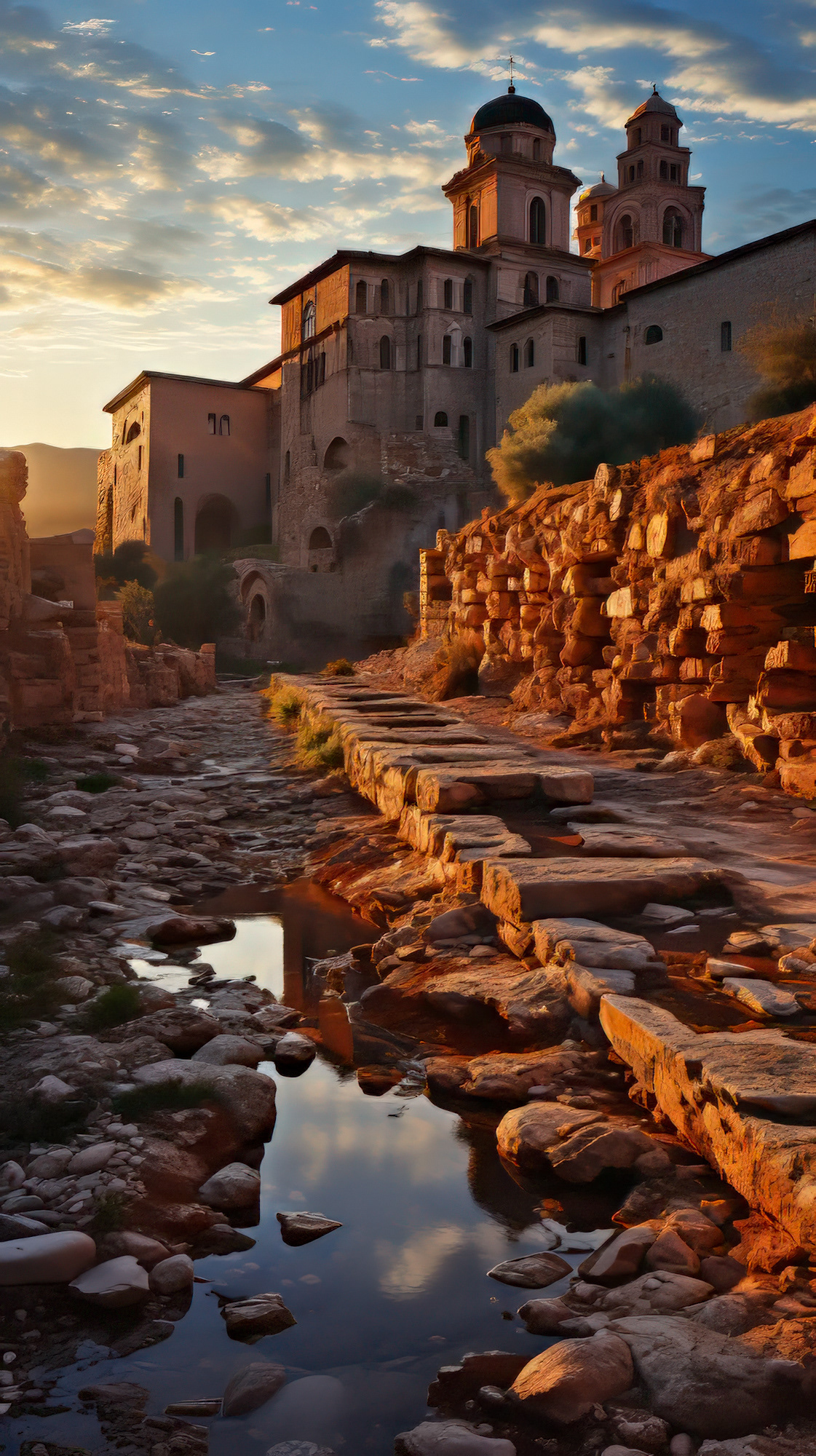
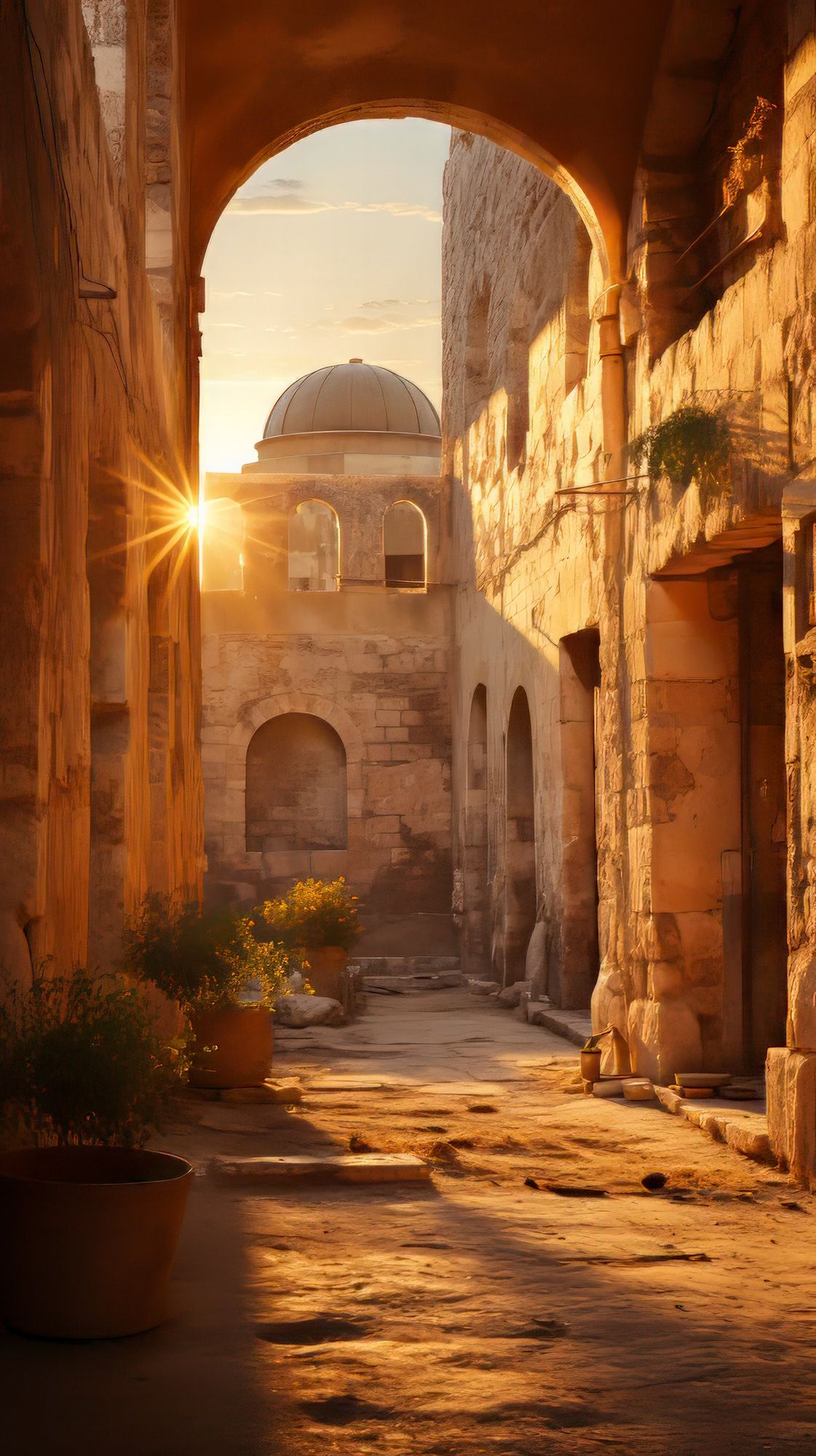
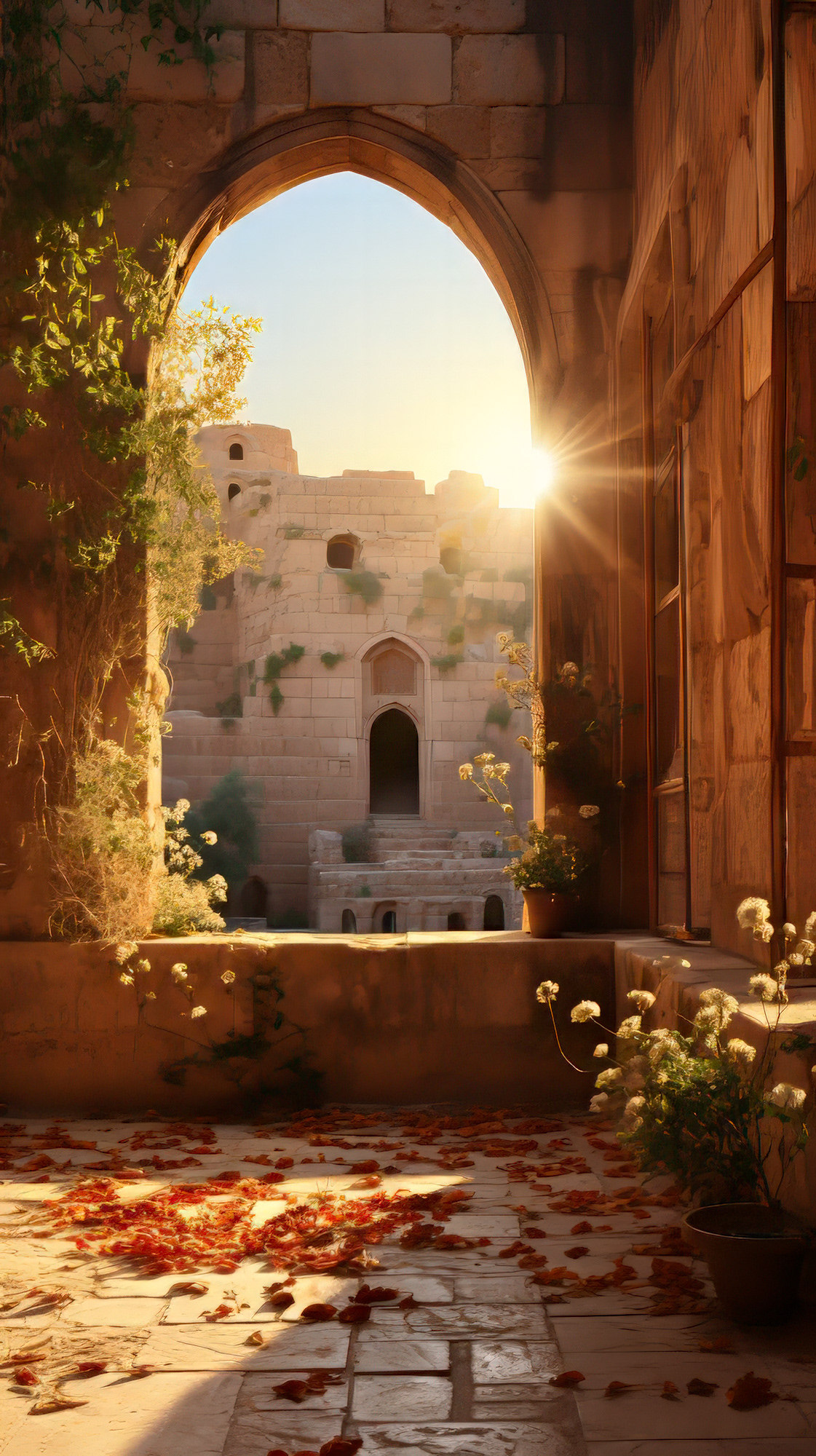
Unearthing Conservation's Legacy
The ancient city of Jerusalem's tapestry of history, culture, and art also bore testament to the unsung conservation heroes. These stewards of heritage worked tirelessly to preserve the city's monuments, ensuring that future generations could experience its splendour.
Drawn by tales of hidden enclosures and painstaking restoration efforts, I sought to unearth these legacies. Navigating through labyrinthine alleys, I stumbled upon a concealed gateway, its entrance adorned with symbols of artisans and restorers.
Passing through the archway, I entered a vast courtyard, its perimeter lined with workshops.
Suddenly, a loose stone on the floor wobbled beneath my foot, revealing a hidden compartment. Inside, I found a collection of letters and journals detailing the challenges and triumphs of conservationists from centuries past. Their passion and dedication, captured in ink, resonated deeply with me.
As the day drew close, I sat amidst the silent enclosures, reflecting on my discoveries. The legacy of conservation in Jerusalem was not just about preserving structures and artefacts; it was about keeping alive the spirit, memories, and essence of a city that had witnessed millennia of human civilisation.
With a heart full of gratitude and admiration for these unsung heroes, I left the enclosure, eager to share the tales of conservation's enduring legacy with the world.
Discoveries in the Deserted Oasis: Trails of Green Resilience in Jerusalem
Jerusalem, renowned for its spiritual sanctity and historical significance, was also a beacon of natural beauty. Among its treasures, the Jerusalem Forest stood out—a verdant oasis that had once been the city's green lung.
Intrigued by tales of this forest and its transformation, I embarked on a journey to explore its trails. The forest's entrance, though obscured by drifting sands and the relentless advance of the desert, revealed itself after a thorough search. What had once been lush pathways lined with pine, cypress, and olive trees now looked desolate. The familiar rustle of leaves was replaced by the whisper of the wind carrying with it grains of sand.
Yet, as I ventured deeper, signs of resilience emerged. Here and there, defiant bursts of green interrupted the monochrome landscape. A stubborn tree, its trunk gnarled and leaves dusty but intact, stood as a testament to nature's enduring spirit. Further ahead, a shrub, its roots deep within the earth, bore fresh blossoms—a beacon of hope amid desolation.
The trails, though obscured, held their tales. Faint footprints hinted at the presence of desert creatures, and occasionally, the chirp of a bird would pierce the silence. Now and then, remnants of man-made structures—a forgotten bench, a dilapidated gazebo—spoke of times when families and nature enthusiasts frequented these trails.
Climbing a small hillock, I reached a vantage point that once offered panoramic views of Jerusalem. Though a haze of sand and heat now blurred the city’s skyline, the sight was still mesmerising. The juxtaposition of the sprawling desert with patches of green resilience was a poignant reminder of nature's cyclical patterns and its ability to adapt and endure.
With the setting sun casting golden hues upon the landscape, I retraced my steps, carrying with me memories of a forest that, despite the odds, continued to fight, bloom, and inspire.
Unveiling the Silent Splendors: Architectural Marvels of Jerusalem
The twilight sky of Jerusalem was a canvas of deep blues and fiery oranges. As the sun began its descent, the city's architectural masterpieces emerged from the desert's embrace, their silhouettes sharp against the backdrop of the setting sun.
Drawn by the beauty of these structures, I made my way to the Jerusalem Chords Bridge. With its graceful arcs and innovative design, this modern marvel had once epitomised the city's forward-thinking spirit. Standing at its base, I looked up, marvelling at the interplay of cables and pillars, which seemed to dance in the gentle breeze. The bridge, which had once echoed with the hum of trams and the chatter of pedestrians, now sang a silent song of solitude. Yet, its grandeur remained undiminished, a symbol of Jerusalem's undying spirit of innovation.
Exploring further, I stumbled upon hidden gems—age-old fountains with ornate carvings, buildings with intricate latticework, and courtyards adorned with mosaics. Whether ancient or modern, each structure was a testament to the city's rich architectural tapestry.
In my wanderings, I chanced upon an old observatory, its dome weathered by time. Climbing to its summit, I was rewarded with a breathtaking panorama of the city. The juxtaposition of ancient stone structures with modern skyscrapers painted a picture of a city that had seamlessly blended its past with the present.
As darkness cloaked the city, the architectural wonders of Jerusalem transformed into ethereal silhouettes, their beauty magnified by the moon's and stars' soft glow. With a heart full of wonder and reverence, I ventured forth, eager to discover more of the city's silent splendours.
Walking with Ghosts: Jerusalem's Philanthropic Shadows and Historical Footprints
As the cloak of twilight wrapped around Jerusalem, its historical edifices whispered tales of philanthropy and epochs gone by. One such monument that beckoned was the Montefiore Windmill. This iconic structure stood tall, a sentinel of history against the city's changing skyline.
Commissioned in the 19th century, the windmill had been a generous gift from Moses Montefiore, a British Jewish banker. His intent was noble—to foster the economic independence of Jerusalem's Jewish denizens. As I approached the windmill, I could almost hear the echoes of its sails turning, grinding grain, and fueling the city's spirit of self-sufficiency.
Time, however, had not been kind. The sails now stood still, and the windmill's robust frame bore scars of wear and age. The gardens that once surrounded it, teeming with life and laughter, had given way to shifting sands. Yet, the silhouette of the windmill, illuminated by the moonlight, evoked a profound respect for the philanthropists who had shaped Jerusalem's destiny.
Venturing further, I discovered plaques and markers, each bearing testimonies of donors and visionaries. Their big and small contributions had left indelible marks on the city's tapestry. These philanthropic endeavours spanned schools, hospitals, parks, and cultural centres.
Amidst these reflections, I found myself at a quaint square, its centre adorned with a statue. Though worn by time, the figure bore a striking resemblance to Sir Moses Montefiore. The surrounding plaques spoke of his numerous charitable endeavours and deep love for the city.
As the night deepened, I continued my journey, traversing streets and alleys that bore silent witness to acts of generosity and visions of a brighter future. With every step, I felt an overwhelming sense of gratitude for these unsung heroes, whose legacies continued to shape Jerusalem's soul long after their time had passed.
Journey Through the Moon's Mystique: Faith's Echo in a Silent Jerusalem
In the heart of the desert's embrace, Jerusalem shimmered under the spell of a silvery moon. The vast dunes, stark and formidable by day, now glowed with a gentle luminance, their soft undulations capturing the moon's reflection. Desert flora's form sharp against the night created mesmerising patterns on the cool sand beneath.
Drawn irresistibly to the city's spiritual epicentre, I wandered to the Garden Tomb. Revered by many as the burial and resurrection site of Jesus, the tomb now stood partially ensconced by sand, its entrance a silent witness to history. Once a sanctuary for prayer and reflection, the garden was overgrown with hardy desert plants. But the serenity remained. In the profound silence, broken only by the subtle sounds of the wind, it felt as though the very essence of the place was saturated with millennia of faith and hope.
Intrigued, I ventured closer to the tomb's entrance. There, half-covered by sand, lay an ancient scroll. Its contents spoke of days when the garden was alive with pilgrims, of whispered prayers, and of countless testimonies of faith. As I read, the moonlight intensified, casting a sacred glow around the tomb. For a brief moment, the weight of history, faith, and reverence converged, making the passage of time seem irrelevant.
Venturing deeper into the city, I encountered more such landmarks, each echoing with tales of devotion and spirituality. Ancient chapels' stone walls worn by time reflected the moon's soft glow. Forgotten pathways, once tread by the faithful, beckoned me to explore further, to discover more of Jerusalem's moonlit secrets.
The night culminated atop a hillock, offering a panoramic view of Jerusalem bathed in moonlight. With its blend of antiquity and post-apocalyptic silence, the city resonated with a quiet power. As dawn's first light began to touch the horizon, I realised that Jerusalem's spirit, its enduring faith, remained unbroken, standing resilient against the test of time.
Sacred Echoes: The Valley's Resonance of Devotion in Jerusalem
The moonlit journey through Jerusalem's ancient pathways led me to the Monastery of the Cross. Cradled within the embrace of the Valley of the Cross, this venerable structure, a blend of stone and history, emanated an ageless grace. Tracing its origins to the Byzantine era, the monastery had stood sentinel to eras of worship, scholarly pursuits, and communal bonding.
The walls, thick and laden with memories, reverberated with chants of bygone monks, the flutter of ancient scriptures, and the soft luminescence of countless candles. Now, the courtyards lay silent; their once-vibrant chambers shadowed in the depth of the night. But the moon's soft light breathed life into these silent spaces, making the monastery come alive with whispers of unwavering devotion, scholarly debates, and the warmth of a tight-knit community.
As I ventured deeper into the monastery's confines, I stumbled upon an old chapel, its entrance adorned with faded frescoes. Inside, the remnants of an altar stood, its surface worn but still holding the impressions of countless hands that had sought solace and strength. The air was thick with a profound reverence, and as I knelt, a sense of peace enveloped me—a connection to the countless souls who had found solace here.
Exiting the chapel, a soft chime caught my attention. Following its sound, I discovered a dilapidated bell tower. Climbing its winding staircase, I emerged atop the monastery. The view was breathtaking—a sea of ancient rooftops bathed in moonlight, with the shadows of the Judean hills forming a distant horizon. The city, with its blend of sacred spaces and deserted streets, sang a harmonious tune of timeless devotion.
As dawn's fingers began to brush the sky with strokes of pink and gold, I descended from the tower, carrying with me the resonating echoes of Jerusalem's eternal spirit of devotion and love.
Echoes from the Past: Jerusalem's Halls of Knowledge and Timeless Legacy
The moon's journey across the night sky was nearing its zenith when I stumbled upon the Hebrew University of Jerusalem. This monumental edifice, once a beacon of knowledge and learning, now lay silent and abandoned in the post-apocalyptic world. Its vast halls and corridors, which had once reverberated with the voices of scholars, students, and intellectuals, were now overtaken by the relentless march of the desert.
Drawn by an insatiable curiosity, I entered the university's central library. Rows upon rows of bookshelves stood, their contents intact, bearing testimony to the thirst for knowledge that had driven generations of scholars. Amidst the dusty tomes, I discovered manuscripts, research papers, and artefacts—a treasure trove of knowledge waiting to be rediscovered.
In a secluded corner, I chanced upon a diary. Its pages told the story of a scholar who had dedicated their life to studying Jerusalem's rich history and cultural heritage. Through their words, I travelled back in time, reliving the city's golden age of enlightenment, its challenges, triumphs, and its undying spirit of inquiry.
As I delved deeper into the library, the weight of history and knowledge became palpable. Every book, every manuscript held a story, a fragment of Jerusalem's vast intellectual legacy. In the silence, I could almost hear the passionate debates, the exchange of ideas, and the collective pursuit of knowledge that had once defined this institution.
The night wore on, and as dawn began to break, I emerged from the library, my heart and mind enriched by the vast reservoir of knowledge I had encountered. The university, with its deserted halls and vast repositories of wisdom, served as a poignant reminder of the value of knowledge and the indomitable spirit of Jerusalem's intellectual community.
Armed with newfound insights and a deeper appreciation for the city's rich heritage, I continued my journey, eager to uncover more of Jerusalem's hidden treasures and timeless legacies.
Temporal Echoes: An Interlude Through Digital Realms
As my exploration of post-apocalyptic Jerusalem deepened, I became increasingly aware of the profound weight of preserving and communicating my findings.
The landscapes, tales, and artefacts that unfolded before me were remnants of a bygone era, and their stories, if not documented, risked being lost in the annals of time.
While the advanced technology that facilitated my time-travelling expeditions bore certain constraints, particularly in the transference of tangible artefacts, a solution emerged from the very civilisation I was studying. An ancient digital creation, the internet—a marvel of human ingenuity—presented itself as a conduit across time.
This vast digital tapestry, interwoven with countless threads of thoughts, memories, aspirations, and data, became my vessel. With it, I could bridge the temporal chasm, ensuring that my observations, images, and insights reached my future self and generations to come.
Taking a momentarily pause from my physical explorations, I interfaced with this digital realm. I began meticulously uploading my gathered knowledge, creating a beacon in the digital ether for future explorers and scholars. Each byte of data, each image and note, encapsulated the essence of a lost world, waiting to be rediscovered in a distant future.
With my reflections and findings safely archived in the vast expanse of the digital cosmos, I felt a renewed sense of purpose. The journey ahead beckoned, promising further revelations and mysteries in the heart of Jerusalem …
